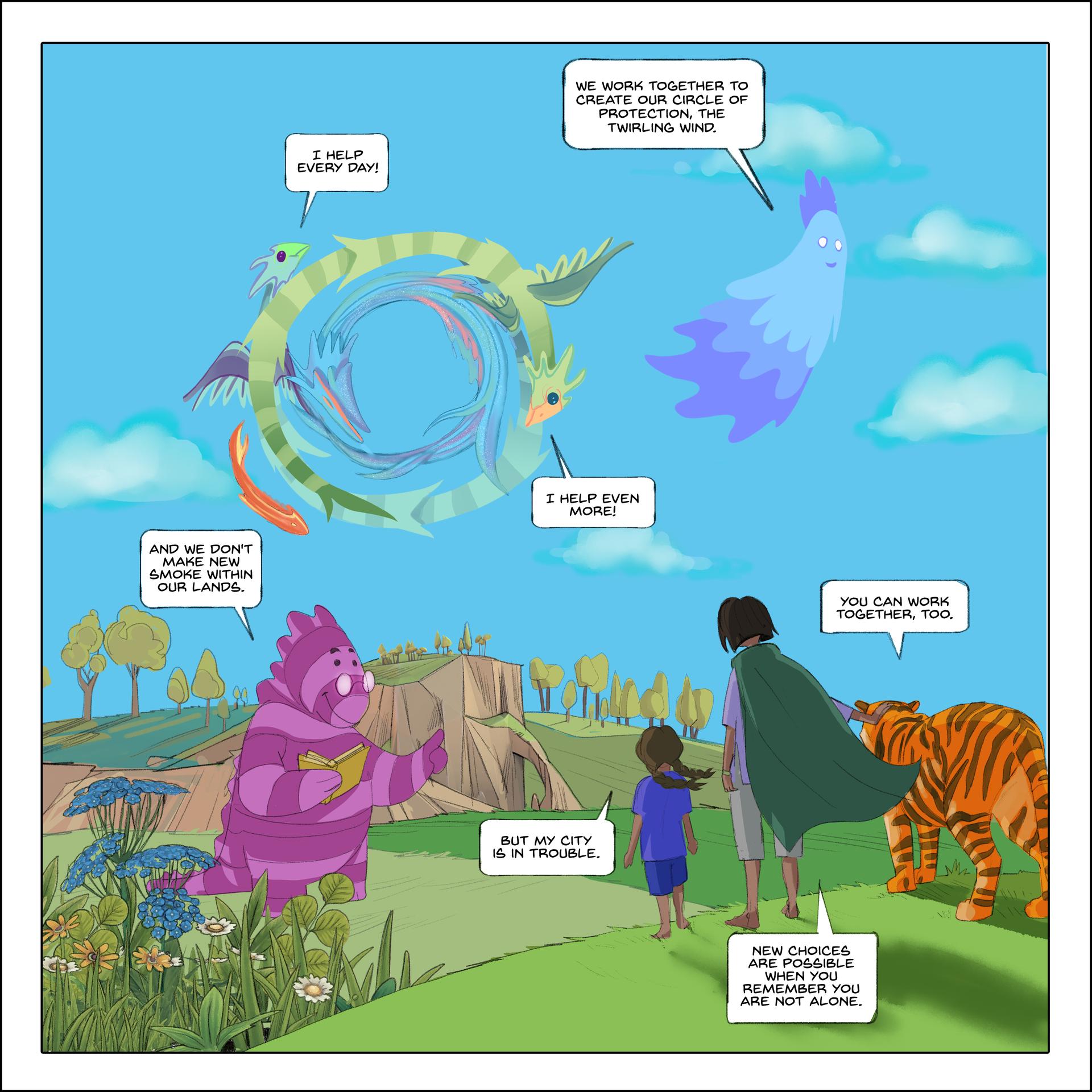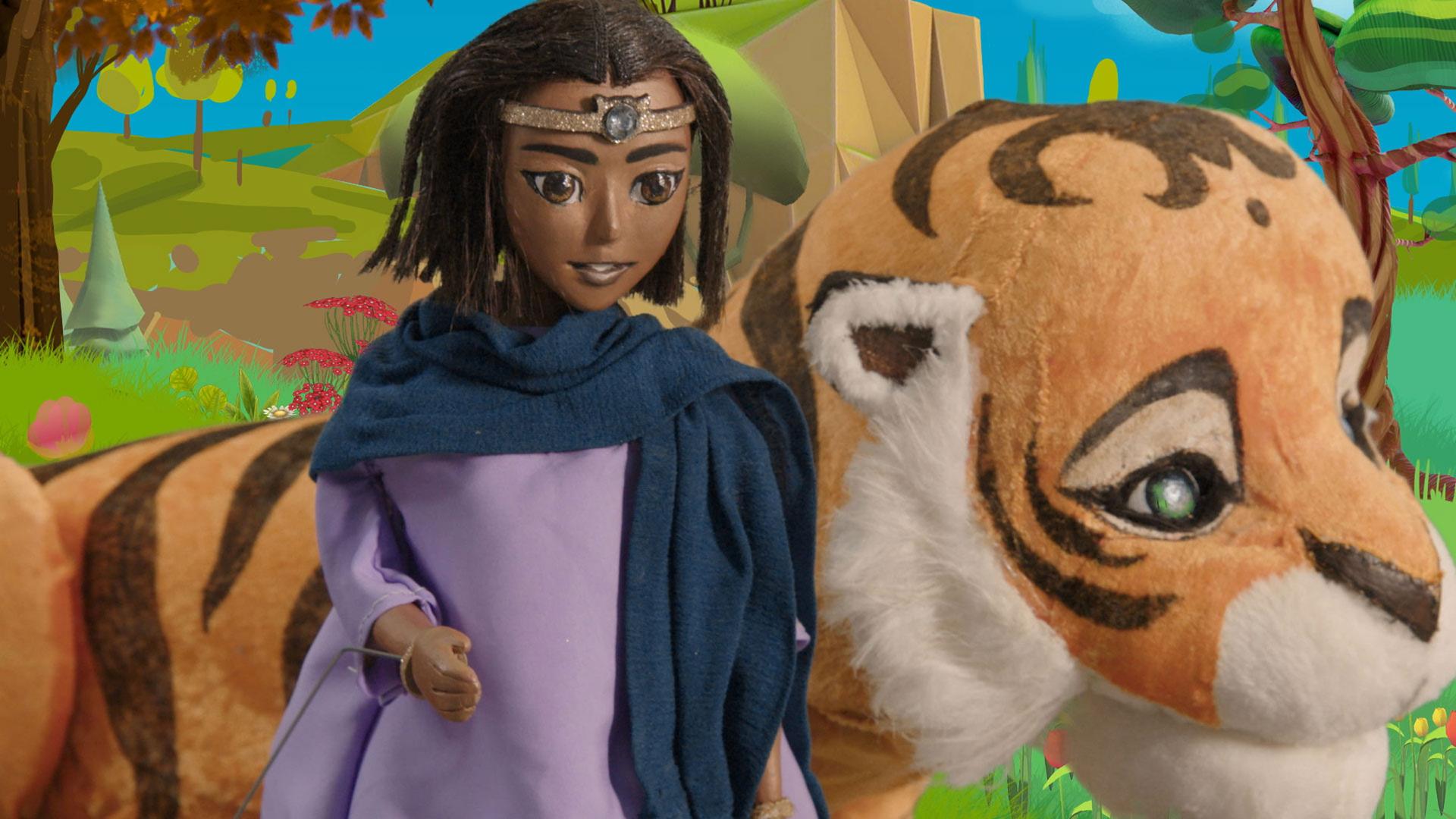When Ram Devineni decided to create India’s first female comic superhero, he had plenty of inspiration.
Indian mythology is full of gods and goddesses who come to the aid of mortals in trouble. The goddess of fortune, Laxmi, shows up riding an owl. The goddess of knowledge, Saraswati, travels on a peacock.
Devineni’s hero, Priya, travels around the world on a flying tiger named Sahas, helping people find solutions to the problems they face. In the seventh comic of the series, “Priya and the Twirling Wind,” she tackles climate change in northern India and the toxic haze that affects New Delhi.

The comic book is 18 pages long, but there are also puppets and a short animated film online. And the physical comic book itself has an extra element: augmented reality. If you scan certain panels, you can see and hear the puppets on a smart device.
Related: Oscar-nominated ‘Wolfwalkers’ blends environmental, spiritual history of Ireland
The story is fairly simple. Little Somya’s asthma is so critical that she ends up in a hospital. Her cries for her mother catch Priya’s attention, who is passing by with Sahas. So, Priya takes her to a magical land where the air is clean and easy to breathe. But unfortunately, there’s trouble even there — miners are cutting down trees.
“And then, it becomes up to Somya, Priya and the women in the village to stop deforestation of this forest that Priya and they live in,” Devineni said.
Somya, Priya and the village women put their arms around the tree trunks, forming a human chain so that the miners’ henchmen cannot cut them down — a direct homage to what’s known as the chipko movement that began in 1973 in the Himalayan region of Uttarakhand, referring to how women pressed their bodies against trees to defend them. It’s been hailed as one of the earliest women-led environmental movements.
Devenini said that they found images from the 1970s in northern India. Village women had realized that deforestation was affecting not only their food chain and natural resources, but also causing unprecedented flooding, so they decided to take a stand.
“We took the photographs and images from the chipko movement and reimagined them to modern times.”
“Literally, we took the photographs and images from the chipko movement and reimagined them to modern times,” he said.

In her first five comics, Priya tackled gender issues — like women who survive acid attacks and trafficking.
The original comic, “Priya Shakti,” was created as a direct response to the brutal gang rape in a New Delhi bus in 2012.
In the story, Priya survives an assault and finds herself being judged and blamed. She flees to the jungle, where she notices a tiger stalking her. Finally one day, she finds her shakti, or “power,” and looks it in the eye. Since then, the tiger (whose name Sahas means courage) remains her loyal companion in the fight against injustice.
He’s also a very sustainable mode of transportation.
“You could theoretically say Sahas is climate friendly,” Devineni said with a laugh. “Sahas totally works on natural energy.”
Related: Did the world ‘build back better’ since the start of the pandemic? Not so much.
Devineni is a documentary filmmaker, but he chose to address these issues in graphic novel format to reach wider audiences.
“I felt it was important that Indian men needed to talk to teenage boys about how we treat or mistreat women.”
“I felt it was important that Indian men needed to talk to teenage boys about how we treat or mistreat women,” he said. “And I know teenage boys just don’t watch documentaries.”
Growing up India, he said that he read a lot of mythology comic books, which remain popular. So, he wanted to use this route to make an impact.
His audience has gradually expanded.
The new comic, “Priya and the Twirling Wind,” is for younger children. And the goal is to make the problem of air pollution feel less overwhelming.
Related: India’s Warrior Moms tackle indoor air pollution — ‘the silent killer’
Seven-year old critic Mahira Ajatshatru said it’s working. She said she liked the story of Priya and Sahas.
“It helped me understand how we can fight against pollution in cities. The pictures in the comic made it even easier to understand the story.”
Her mother, Jessica Gupta, agreed that comics are a fun and versatile medium of storytelling for children.
“Comics can go one step ahead of books by using a lot more imagery to communicate complex concepts in a meaningful way.”
“Comics can go one step ahead of books by using a lot more imagery to communicate complex concepts in a meaningful way,” she added.
Devineni hopes that children will channel their own superpowers to find a solution.
“Priya and the Twirling Wind” launches online on Friday.
